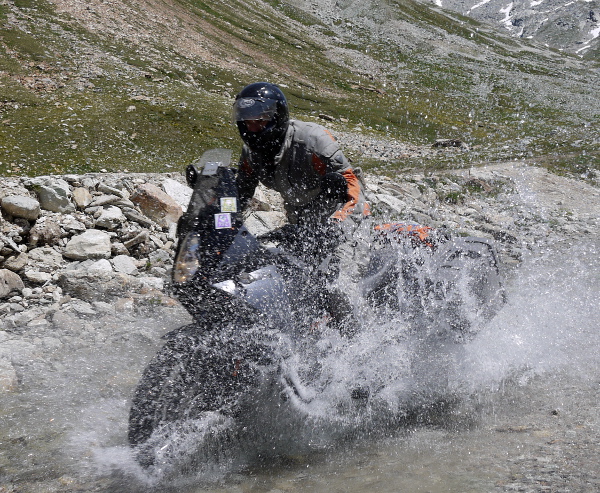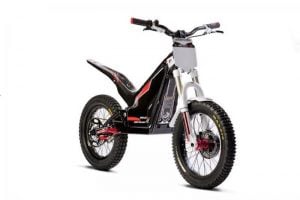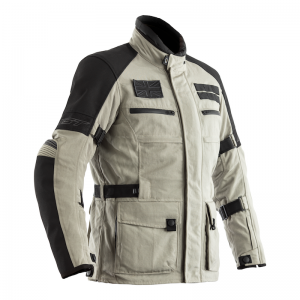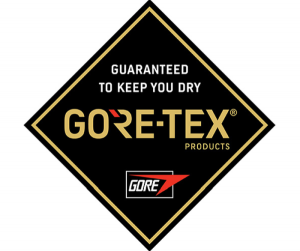Right, let’s have a look at what ‘waterproof’ actually means before we check out the sweaty, humid and not so sweet smelling world of breathability.
To be waterproof, or at least to be able to claim ‘waterproof’ as a feature on the swing tag, a jacket has to be made from a material able to withstand a 1000mm column of water (that’s a force of 9.8kPa for all you Pascal scale fans out there) without letting any liquid pass through.
This is more commonly known as the ‘hydrostatic head’ of the fabric and can be measured under lab conditions and is therefore a subject of little confusion or blood letting contention. It’s common for fabrics to have a hydrostatic head of 5000mm or even 20,000mm in the case of hard wearing ground sheets found on top of the range tents.
As may be deduced from the above, if a fabric has a hydrostatic head measurement then it’s not actually waterproof. A glass bottle is waterproof and so is a plastic nalgene bottle: so, motorcycle jackets come with a degree of waterproofing which for all intents and purposes will resist rain in real world conditions. If your jacket is letting in water then it’s a sure bet it’s not through the fabric but leaking through zips, seams or the extremities such as neck, arms and hem.

And now, let’s take a look at ‘breathability’, the holy grail of all garment manufacturers and the buzz word for clever marketeers who wouldn’t know a vapour molecule from a Triumph Explorer.
Unlike the ‘hydrostatic head’ measurement of a fabric, which is commonly stated on swing tags at the point of sale, you’ll be lucky to find anything which indicates how breathable a fabric is other than PR puff along the lines of ‘keeps you dry on the outside and the inside’ or ‘guaranteed breathable’.
I’ve always thought it a little odd that companies will launch a marketing fanfare to state that their products are breathable and spend a fortune promoting it as such but at the same time not one supplier provides any credible measurement of how breathable their product is for the consumer to make an informed choice. And you can draw your own conclusions from that.
When you, as a consumer, ask about breathability in shops the reply from the assistants tends to be along the old school-yard lines of ‘mine is more breathable than yours’, or variations of that theme, which can be accredited to the simple fact that they do not actually know what they are talking about.
Mind you, there are people who spend their lives measuring such things as the breathability of fabrics (along with other products) and they talk in terms of MVT and RET; that’s Moisture Vapour Transmission and Resistance To Evaporation to you and me.
The problem is, try finding the MVT or RET ratings of a product and you’ll come across a wall of silence that would make a code red MI5 meeting look like a gathering of yummy mummys on a coffee morning.
However, with a bit of digging around I’ve come across the following RET values – not that they’re going to mean that much in the grand scheme of things. Anyway, the lower the figure the more breathable the material:
Gore-Tex Active Shell: 3
Gore-Tex Paclite: 4
eVent 2-layer: 2.7
eVent 3-layer: 4.5
For those of you not conversant with the outdoor industry, eVent is a widely used fabric and known to be more breathable than the Gore-Tex equivalent.
Once again it begs the question: if these measurements are available why are they not made available to the public? The answer to that is simple, there is currently no test undertaken that replicates the breathability of a fabric as it’s going to be used in practical day to day situations and conditions.
The current measuring methods used by the industry are based on readings from a static mannequin in a lab conditions (test ASTM F2370 – 10) and from a sweating hot plate (test ASTM F1868-09). What’s far, far, far more interesting than the results themselves is the comments from the testing facilities
“While a possible indicator of clothing performance, measurements produced by the testing of fabrics have no proven correlation to the performance of clothing systems worn by people. Clothing weight, drape, tightness of fit, and so forth, can minimize or even neutralize the apparent differences between fabrics or fabric assemblies measured by this test method.”
In other words they are all bar useless and ‘other’ factors can influence the apparent breathability more than the qualities of the fabric

What we do know is this: breathability is impaired dramatically when the fabric wets out (i.e. when riding in the rain), when the fabric is anything but showroom clean and very much dependent on the wicking ability of the layers worn underneath.
It is also widely promoted by the industry that for a fabric to breath there needs to be a pressure differential between the conditions inside (hot and sweaty) and those on the outside (dry and cold). In other words should you find yourself sitting on your bike atop Mt Everest in a freshly laundered jacket, having just run a four minute mile in high wicking fleece underwear then there’s a good chance your jacket will breath. Conversely, should you find yourself riding your bike in the UK………..

The fact is, if you want to remain dry on the inside then it’s going to be more down to the venting options available on the garment, the through-flow of air, the cut and fit of the jacket and the clothing worn underneath. The breathability of the fabric, is, well, you tell me, because no-one else can, or wants to, other than those in the marketing departments.
Want to know more about this sort of stuff? Then check out these features
The Design Flaw Baked Into Motorcycle Jackets





